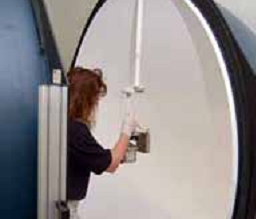LED Measurement Series:
Luminaire Efficacy
The use of light-emitting diodes (LEDs) as a general light source has forced changes in test procedures used to measure lighting performance. This fact sheet describes the concept of luminaire efficacy and the technical reasons for its applicability to LED-based lighting fixtures.
Lighting energy efficiency is a function of both the light source (the light “bulb” or lamp) and the fixture, including necessary controls, power supplies and other electronics, and optical elements. The complete unit is known as a luminaire.
Traditionally, lighting energy efficiency is characterized in terms of lamp ratings and fixture efficiency. The lamp rating indicates how much light (in lumens) the lamp will produce when operated at standard room/ambient temperature (25 degrees C). The luminous efficacy of a light source is typically given as the rated lamp lumens divided by the nominal wattage of the lamp, abbreviated lm/W. The fixture efficiency indicates the proportion of rated lamp lumens actually emitted by the fixture; it is given as a percentage. Fixture efficiency is an appropriate measure for fixtures that have interchangeable lamps for which reliable lamp lumen ratings are available.
However, the lamp rating and fixture efficiency measures have limited usefulness for LED lighting at the present time, for two important reasons:
1) There is no industry standard test procedure for rating the performance of LED devices or packages.
2) The luminaire design and the manner in which the LEDs are integrated into the luminaire have a material impact on the performance of the LEDs.
These two issues are discussed in greater detail below. Given these limitations, how can LED luminaires be compared to traditional lighting technologies? As an example, the table below compares two recessed downlight fixtures, one using a 13-watt CFL and the other using an array of LEDs. The table differentiates data related to the light source and data resulting from actual luminaire measurements. Luminaire photometry shows that in this case the LED fixture has input wattage and light output similar to the CFL fixture, and matches the CFL product’s luminaire efficacy. This example is based on a currently available, residential-grade, six-inch diameter downlight. LED downlight performance continues to improve rapidly, with some LED retrofit products surpassing CFL downlights in luminaire efficacy.




